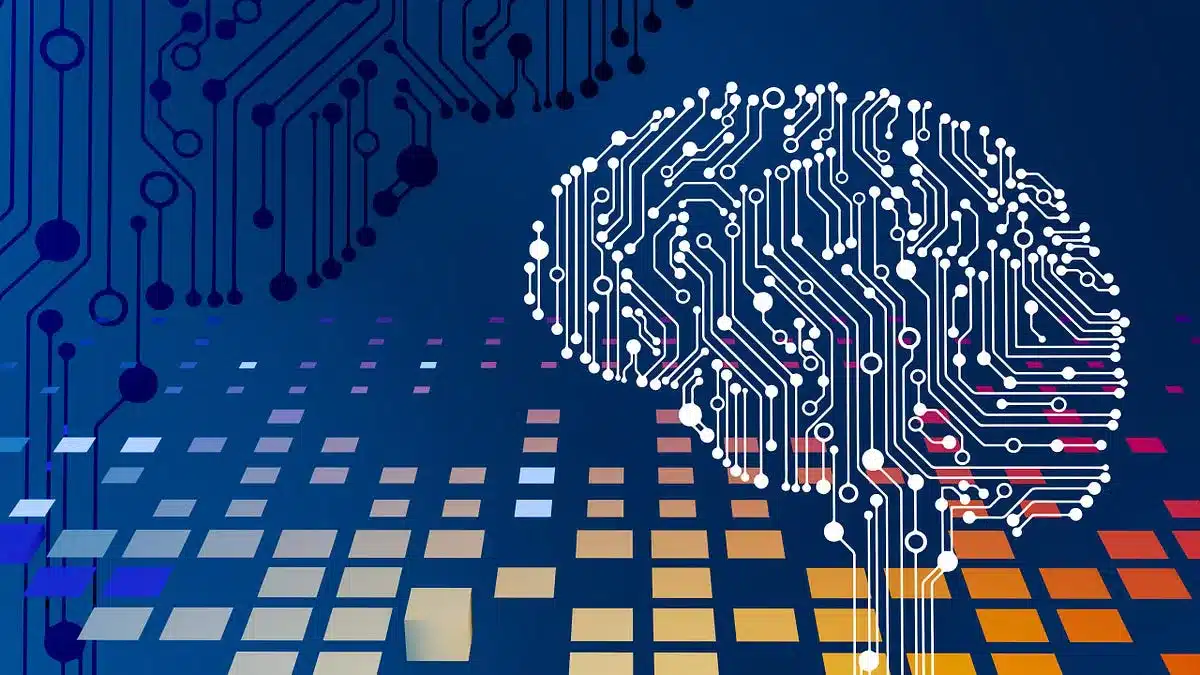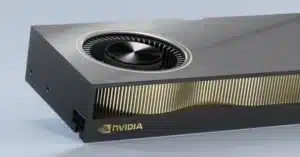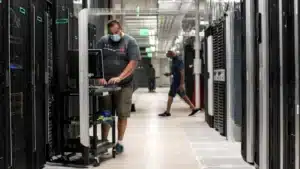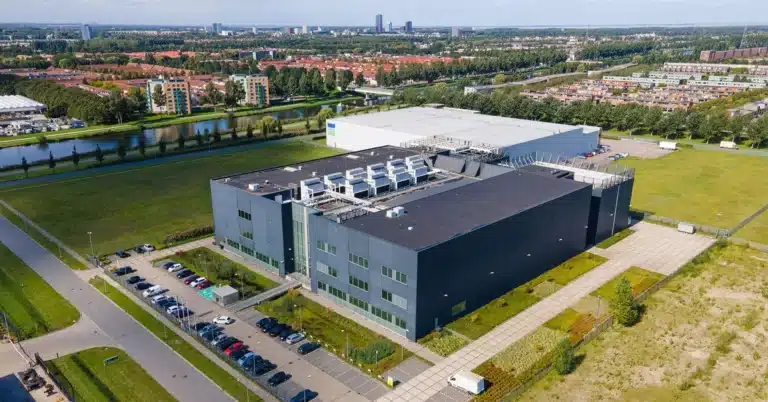Transform Your Streaming Experience with Dedicated Streaming Servers
- 10x Faster Video Processing and Multi-Platform Broadcasting
- Guaranteed 99.9% Uptime with Exclusive Resource Access
- Scalable Infrastructure That Grows Revenue Opportunities
- Enterprise-Level Security and Professional Reliability

TOC
TOC
Price Plans Streaming GPU Servers
| 2x A100 80GB GPU Server |
|---|
| $2300 monthly |
| 2x Xeon Gold 6336Y |
| 256 GB RAM |
| 1 TB SSD |
| Unlimited data |
| 1 Public IPv4 |
| DC Amsterdam, Netherlands |
| Buy A100 80GB GPU Server |
| 2x NVIDIA RTX 6000 Ada Lovelace GPU Server |
|---|
| $1500 monthly |
| 1x Xeon Silver 4410T |
| 128 GB RAM |
| 1 TB SSD |
| Unlimited data |
| 1 Public IPv4 |
| DC Amsterdam, Netherlands |
| Buy RTX 6000 Ada Lovelace GPU Server |
| 2x NVIDIA A40 GPU Server |
|---|
| $1500 monthly |
| 2x Xeon Gold 6326 |
| 128 GB RAM |
| 1 TB SSD |
| Unlimited data |
| 1 Public IPv4 |
| DC Amsterdam, Netherlands |
| Buy A40 GPU Server |
| 1x RTX A4000 GPU Server |
|---|
| $370 monthly |
| 1x Xeon Silver 4114 |
| 64 GB RAM |
| 1 TB SSD |
| Unlimited data |
| 1 Public IPv4 |
| DC Amsterdam, Netherlands |
| Buy RTX A4000 GPU Server |
| 2x NVIDIA RTX 4000 Ada Lovelace GPU Server |
|---|
| $450 monthly |
| 1x Xeon Silver 4410T |
| 128 GB RAM |
| 1 TB SSD |
| Unlimited data |
| 1 Public IPv4 |
| DC Amsterdam, Netherlands |
| Buy 2x RTX 4000 Ada Lovelace GPU Server |
| 2x NVIDIA A6000 GPU Server |
|---|
| $1500 monthly |
| 1x Xeon Gold 6226R |
| 256 GB RAM |
| 2 TB SSD |
| Unlimited data |
| 1 Public IPv4 |
| DC Amsterdam, Netherlands |
| Buy A6000 GPU Server |
| 1x RTX 6000 Blackwell GPU Server |
|---|
| $900 monthly |
| 1x Xeon Silver 4114 |
| 128 GB RAM |
| 1 TB SSD |
| Unlimited data |
| 1 Public IPv4 |
| DC Amsterdam, Netherlands |
| Buy RTX 6000 Pro Blackwell GPU Server |

Power of Computeman Streaming Hosting Infrastructure
Picture this: You’re in the middle of an epic gaming session, streaming live to thousands of viewers, when suddenly your video starts stuttering, your audio cuts out, and your chat explodes with frustrated comments. Your heart sinks as you watch your viewer count plummet. Sound familiar? If you’ve ever experienced the crushing disappointment of technical failures during crucial streaming moments, you’re not alone.
The difference between streaming success and streaming failure often comes down to one critical factor: the power of your hosting infrastructure. While many streamers and content creators struggle with basic shared hosting solutions that simply can’t handle the demanding requirements of modern streaming, smart businesses and serious creators are making the switch to GPU streaming hosting and dedicated streaming servers – and the results speak for themselves.
In today’s hyper-competitive digital landscape, where audiences expect flawless 4K streams, instant loading times, and zero downtime, settling for anything less than professional-grade infrastructure isn’t just limiting your potential – it’s actively sabotaging your success.
Computeman GPU streaming hosting and dedicated streaming servers have become more accessible and affordable than ever, putting enterprise-level capabilities within reach of serious content creators, gaming businesses, and streaming professionals who refuse to compromise on quality.
Salient Features of Streaming GPU Servers
Lightning-Fast Network Speeds with Massive Bandwidth Capacity
Here’s where things get really exciting: dedicated streaming servers come equipped with 1Gbps, 3Gbps, or even 10Gbps network connections. To put this in perspective, a 1080p stream needs about 6-8 Mbps per viewer, while 4K streaming requires around 25 Mbps per user. With a 10Gbps connection, you could theoretically handle hundreds of concurrent 4K streams without breaking a sweat. Many providers even include 100TB or more of free monthly bandwidth, so you don’t have to worry about unexpected overage charges during viral moments.
Strategic Global Positioning for Minimal Latency
Location matters more than you might think in streaming. The physical distance between your server and your viewers directly impacts stream quality and loading times. Smart dedicated server providers operate data centers in major internet hubs like Chicago, Amsterdam, and Frankfurt, ensuring your content reaches audiences quickly regardless of where they’re located. Many also offer Content Delivery Network (CDN) integration, which caches your streams at multiple locations worldwide, making your content feel local to viewers everywhere. It’s like having express delivery for your video content – fast, reliable, and always on time.
Seamless Scalability That Grows with Your Success
The best about dedicated streaming servers is how they adapt to your growth. Need more processing power for a big event? Want to add GPU acceleration for 4K content? No problem. Most providers offer flexible upgrade paths, so you can start with a basic configuration and scale up as your audience grows. Some even provide automatic load balancing and traffic management to handle sudden viewer spikes without any manual intervention. It’s like having a server that automatically gets stronger when you need it most.
Powerhouse Hardware Built for Heavy-Duty Performance
Modern dedicated streaming servers pack serious punch with multi-core processors like AMD EPYC, Intel Xeon, or high-end Ryzen CPUs. We’re talking about 8-64 cores of processing power that can handle multiple video encoding tasks simultaneously. The memory capacity scales with your needs too – you’ll typically get anywhere from 64GB to 128GB+ of RAM, which follows the industry standard of roughly 1GB RAM per concurrent stream. Storage-wise, NVMe SSDs have become the gold standard because they can read and write data fast enough to prevent those annoying buffering issues.
All Resources Are Exclusively Yours – No More Sharing HeadachesInterconnects
Think of it like having your own private highway instead of being stuck in traffic with everyone else. With a dedicated streaming server, every bit of CPU power, RAM, and bandwidth belongs solely to you. You’ll never again experience that frustrating moment when your stream starts stuttering because someone else’s website is hogging resources. Whether you’re streaming at 3 AM or during peak evening hours, your performance stays rock-solid consistent because there’s no competition for server resources.
Fort Knox-Level Security with 99.9% Uptime Guarantees
Security isn’t just an afterthought – it’s built into the foundation. Dedicated streaming servers come with advanced DDoS protection, SSL/TLS encryption, and sophisticated firewall configurations. Since you’re not sharing the server with potentially risky neighbors, your content and viewer data stay locked down tight. Plus, most providers back their reliability with 99.9% uptime Service Level Agreements, which translates to less than 9 hours of downtime per year. Compare that to shared hosting where outages can happen anytime someone else’s website crashes.
Why Computeman Streaming GPU Servers
Rock-Solid 99.9% Uptime That Protects Your Reputation
Nothing destroys a streamer’s credibility faster than unreliable broadcasts. Every time your stream crashes during crucial moments, you’re not just losing current viewers – you’re training your audience not to trust that you’ll deliver consistent content.
Complete Control and Customization That Grows With Your Ambitionsructure Prediction
Want to install specialized streaming software? No problem. Need to configure custom encoding settings? Done. Planning to integrate AI-powered chat moderation or real-time visual effects? Your server, your rules. As your streaming business grows and evolves, your dedicated server adapts with you.
Professional-Grade Security That Protects Your Business and Audience
Dedicated streaming servers come with enterprise-grade security features including advanced firewalls, DDoS protection, SSL encryption, and isolated environments that keep your operations completely separate from other users.
Rock-Solid 99.9% Uptime That Protects Your Reputation
With streaming dedicated infrastructure, you get redundant power supplies, multiple network connections, and automatic failover systems that keep your streams running even when problems occur. Your audience learns to trust that when they click on your stream, it will work perfectly every single time.
Frequently Asked Questions
Can I stream to multiple platforms simultaneously?
Absolutely! This is one of GPU hosting’s biggest advantages. You can simultaneously stream to Twitch, YouTube, Facebook Gaming, and other platforms in different resolutions and quality settings. Many streamers broadcast their main content in 4K to one platform while streaming 1080p versions to others, all from the same GPU server without performance degradation.
Can I upgrade or downgrade my Streaming GPU hosting plan?
Yes, most providers offer flexible scaling options. You can start with a basic GPU configuration and upgrade to more powerful hardware as your audience grows. Many also offer temporary upgrades for special events – so if you’re expecting a big stream or tournament, you can boost your server power for just that period.
What support is available if I have problems?
Professional Streaming hosting providers offer 24/7 technical support via chat, phone, and email. Since streaming often happens during evening and weekend hours, round-the-clock support is crucial. Look for providers with streaming-specific expertise who understand the unique challenges of live broadcasting and can resolve issues quickly.
How difficult is it to set up GPU hosting for streaming?
Most reputable GPU hosting providers offer managed services that handle the technical setup for you. You’ll typically get pre-configured streaming software, optimized encoding settings, and 24/7 support to help with any issues. If you can use OBS or similar streaming software, you can use GPU hosting – the learning curve is minimal but the performance gains are massive.
What kind of internet connection do I need?
The beauty of Streaming GPU hosting is that the heavy lifting happens in the data center, not your home. You only need enough upload bandwidth to send your control inputs to the server (usually 5-10 Mbps is plenty) and enough download speed to receive the compressed video feed. The streaming dedicated server handles broadcasting to thousands of viewers using its enterprise-grade internet connections.
Can Streaming GPU hosting handle gaming while streaming?
This is exactly what GPU hosting excels at. Modern GPU servers can run the latest games at maximum settings while simultaneously encoding multiple stream outputs without frame drops or quality loss. You could play Cyberpunk 2077 on ultra settings while streaming in 4K and recording a separate 1080p version for YouTube – all on the same server.
All Server Resources Are 100% Yours – No More Sharing Nightmares
Imagine trying to host a party in an apartment where you have to share the kitchen, bathroom, and living room with five unpredictable roommates. That’s exactly what shared hosting feels like when you’re streaming. With a dedicated streaming server, every bit of CPU power, RAM, and bandwidth belongs exclusively to you.
You’ll never again experience that heart-stopping moment when your stream starts stuttering because someone else’s website is hogging server resources.
Whether you’re streaming at 3 AM or during prime-time hours when the internet is busiest, your performance stays rock-solid consistent. It’s like having your own private highway instead of being stuck in traffic – your content flows smoothly no matter what’s happening with other users on the network.
Professional streamers consistently report that this exclusive resource access is the single biggest factor in maintaining viewer retention and building loyal audiences.
Lightning-Fast Performance That Makes Viewers Actually Stick Around
Here’s what most streamers don’t realize: the average viewer decides within the first 10 seconds whether your stream is worth watching. If your content is buffering, loading slowly, or looks pixelated, they’re gone before you even know they were there.
Dedicated streaming servers deliver the kind of blazing-fast performance that makes viewers immediately think “wow, this looks professional”. We’re talking about multi-core processors with 8-64 cores of pure processing power, 64GB+ of RAM, and network speeds up to 10Gbps.
Your streams load instantly, play flawlessly, and maintain consistent quality even when hundreds or thousands of people are watching simultaneously.
When your technical performance is flawless, viewers naturally assume your content is high-quality too – it’s a psychological advantage that translates directly into higher subscriber counts and better engagement rates.
Real-World Performance That Makes a Difference
GPU-accelerated encoding can process video up to 10 times faster than traditional CPU encoding while maintaining superior quality.
To put this in practical terms, if it used to take your setup 10 seconds to process and broadcast a scene transition, GPU encoding does it in just 1 second.
That’s the difference between viewers experiencing smooth, professional streams and choppy, amateur-looking content.
The parallel processing capabilities of modern GPUs mean you can handle multiple demanding tasks without compromise
You could be:
- Streaming your main content in 4K to Twitch
- Recording a separate 2160p version for YouTube
- Running AI-powered chat moderation
- Processing real-time visual effects
- Managing multiple camera feeds
- All at the same time, flawlessly
Computeman GPU servers feature memory systems that can transfer 800+ GB/s of data, compared to 100-200 GB/s typical of standard CPU-based systems. This means faster loading times, smoother transitions, and the ability to handle multiple high-resolution video streams without bottlenecks.
Testimonials
“As an online educator streaming interactive lessons to hundreds of students, reliability is everything. My dedicated server’s exclusive 64GB RAM and multi-core processing handles multiple camera feeds, screen sharing, and real-time whiteboard tools simultaneously without any lag. Students stay engaged because the experience is professional and seamless. It’s like having a TV studio in the cloud!”
Jennifer Walsh – Educational Content Streamer







